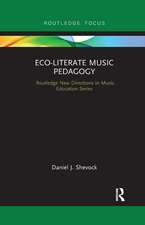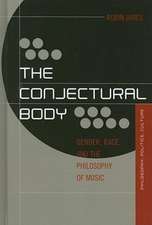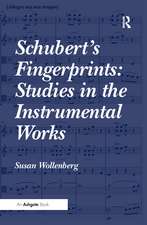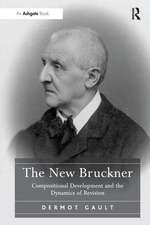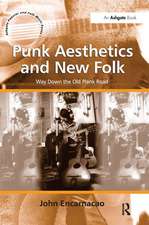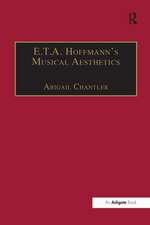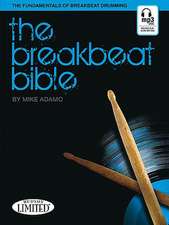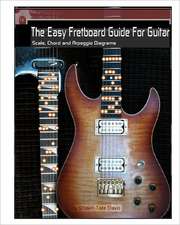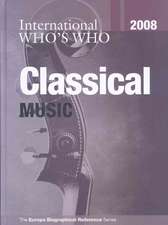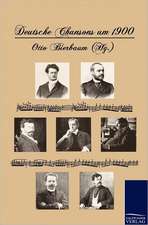Art as Music, Music as Poetry, Poetry as Art, from Whistler to Stravinsky and Beyond
Autor Peter Dayanen Limba Engleză Hardback – 19 mai 2011
| Toate formatele și edițiile | Preț | Express |
|---|---|---|
| Paperback (1) | 324.16 lei 6-8 săpt. | |
| Taylor & Francis – 16 noi 2016 | 324.16 lei 6-8 săpt. | |
| Hardback (1) | 821.13 lei 6-8 săpt. | |
| Taylor & Francis – 19 mai 2011 | 821.13 lei 6-8 săpt. |
Preț: 821.13 lei
Preț vechi: 1103.49 lei
-26% Nou
Puncte Express: 1232
Preț estimativ în valută:
157.14€ • 162.34$ • 130.78£
157.14€ • 162.34$ • 130.78£
Carte tipărită la comandă
Livrare economică 25 martie-08 aprilie
Preluare comenzi: 021 569.72.76
Specificații
ISBN-13: 9780754667919
ISBN-10: 075466791X
Pagini: 196
Ilustrații: Includes 8 colour and 5 b&w illustrations
Dimensiuni: 156 x 234 x 21 mm
Greutate: 0.52 kg
Ediția:New ed
Editura: Taylor & Francis
Colecția Routledge
Locul publicării:Oxford, United Kingdom
ISBN-10: 075466791X
Pagini: 196
Ilustrații: Includes 8 colour and 5 b&w illustrations
Dimensiuni: 156 x 234 x 21 mm
Greutate: 0.52 kg
Ediția:New ed
Editura: Taylor & Francis
Colecția Routledge
Locul publicării:Oxford, United Kingdom
Notă biografică
Peter Dayan is Professor of Word and Music Studies at the University of Edinburgh, UK. His influential book Music Writing Literature, from Sand via Debussy to Derrida (Ashgate, 2006) showed how, since the time of the Romantics, poetry has been creating a space which music needs, and vice versa. All his more recent work, on 20th-century writers, painters and composers from Julio Cortazar to Igor Stravinsky, has revolved around the question of why art in any given medium so compulsively defines itself as if it were in a different medium - and how this intermedial round actually provides a surprisingly resilient definition of art itself.
Recenzii
'The subtlety of the analysis is a particularly impressive aspect of Dayan’s argument: no word is left unquestioned, no visual image is glossed over, no statement is taken for granted in the quest to elucidate even the most gnomic utterances of these artists... He is an engaging guide to the subtleties of his subject, knowing just when he can effectively lapse into informal chattiness or share a first-person confidence, and he can also be quite self-deprecating - although one can afford to be modest when one has written a book of this quality... This study will most readily appeal to those whose interests, like Dayan's, extend beyond a single specialism to the arts in general, but it is still a must for anyone interested in this period or the artists under consideration.' Modern Language Review
'This book is a valuable addition to the growing body of work on interdisciplinary exchange within Western art, music and literature of the late nineteenth and early twentieth centuries... an admirable work, and one that continues to provoke a scholarly discussion with the reader long after it is put down.' Music in Art
'... an interesting book... [Dayan's] conclusions are often refreshingly new.' Art History
'This engaging and meticulous book is essential reading for anyone fascinated by the visceral quality of the arts, and life on the flowing but obstinate borders between them’. French Studies
'This book is a valuable addition to the growing body of work on interdisciplinary exchange within Western art, music and literature of the late nineteenth and early twentieth centuries... an admirable work, and one that continues to provoke a scholarly discussion with the reader long after it is put down.' Music in Art
'... an interesting book... [Dayan's] conclusions are often refreshingly new.' Art History
'This engaging and meticulous book is essential reading for anyone fascinated by the visceral quality of the arts, and life on the flowing but obstinate borders between them’. French Studies
Cuprins
Introduction; Chapter 1 Whistler’s Poetry; Chapter 2 Satie’s Art; Chapter 3 Apollinaire’s Art; Chapter 4 Braque’s Music; Chapter 5 Ponge’s Music; Chapter 6 Stravinsky’s Poetry; Chapter 101 Conclusion;
Descriere
An extraordinary fraternity of poets, painters and composers in Paris, between 1885 and 1945, built our modern notion of ’great art’ on the principle that we must always think about the value of a work of art, not within the logic of its own medium, but as if it transposed the value of another medium. Peter Dayan chronicles the rise of this principle, describes its eclipse from the 1960s and shows how, in the 21st century, it is fighting back.



